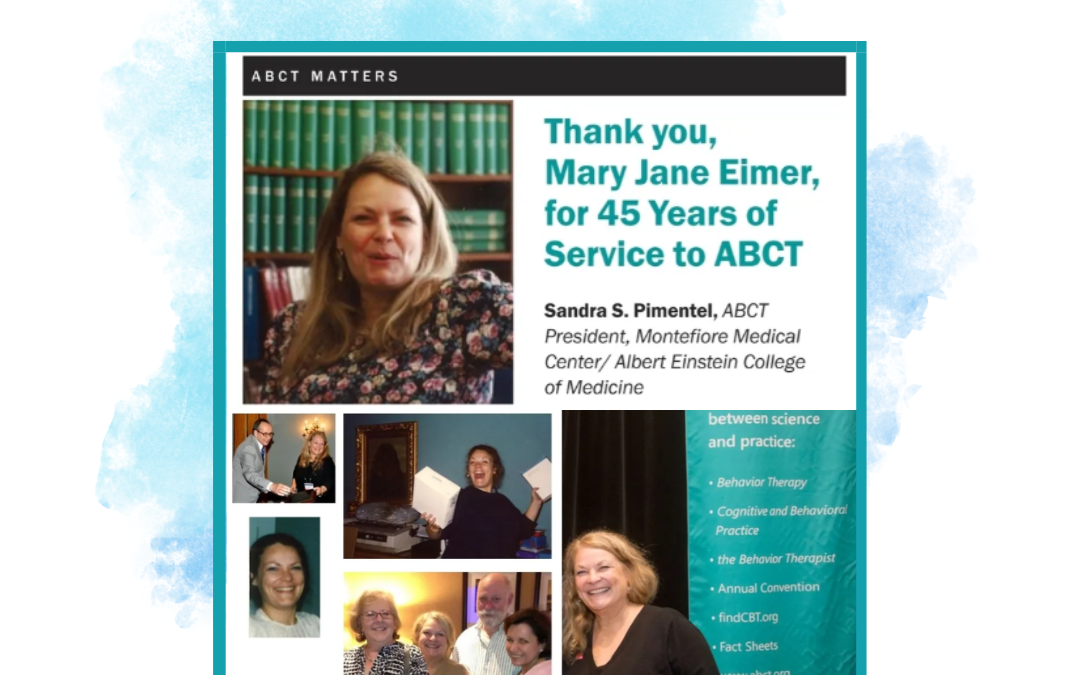Find a CBT Therapist
Search through our directory of local clinicians.
the Behavior Therapist’s June 2024 Issue Is Now Available Online
Don’t miss the June 2024 issue of the Behavior Therapist, paying tribute to Executive Director Mary Jane Eimer and her incredible 45 years of service to ABCT.
We’ve prepared a how-to guide to help you navigate tBT online. Read on for more details or click above for the issue.

Click on an article’s title to be taken directly that article.


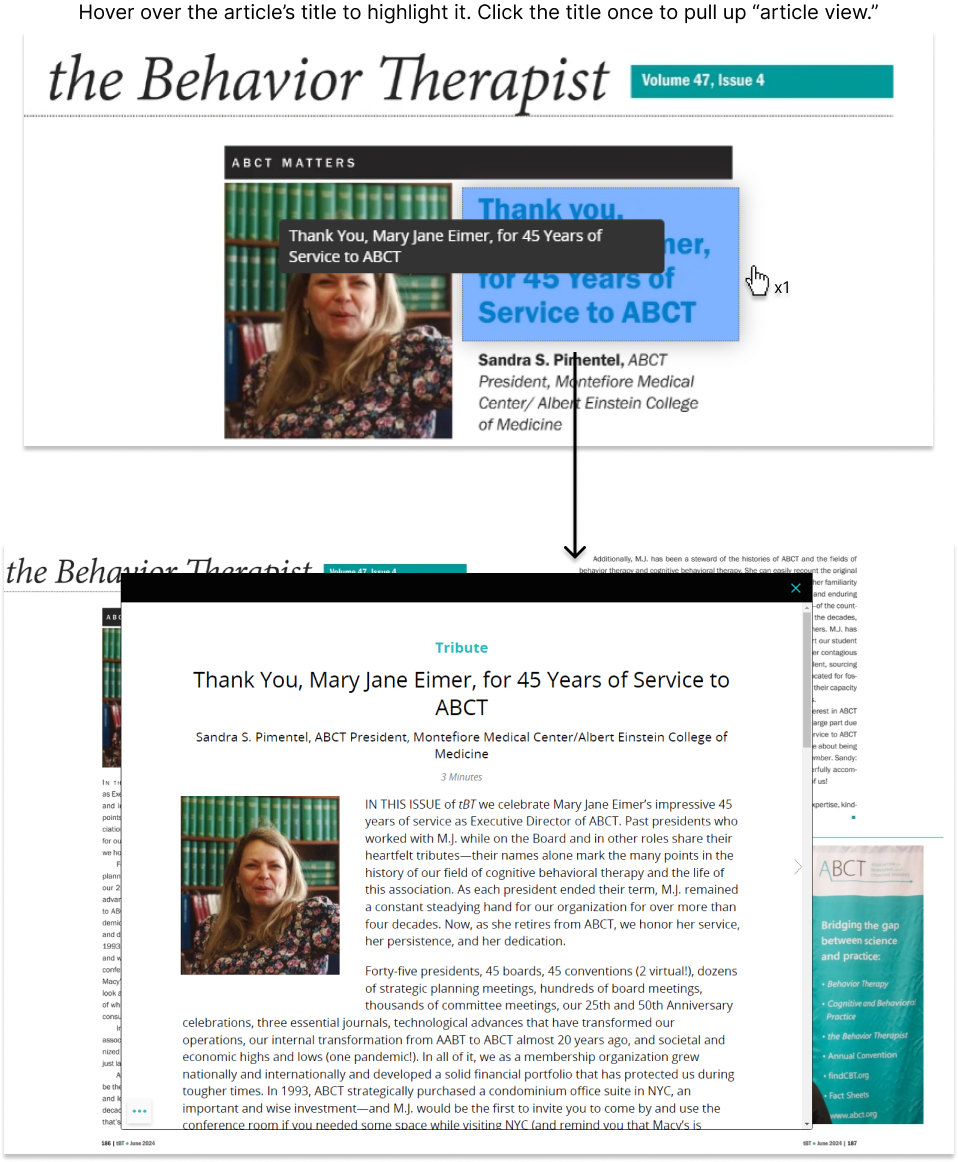
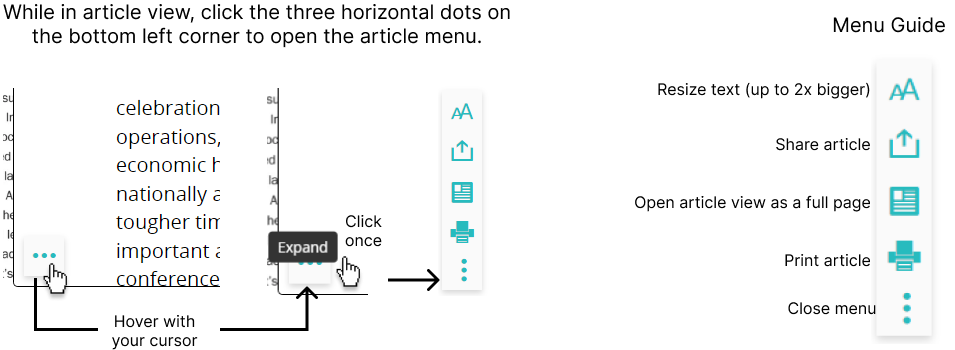
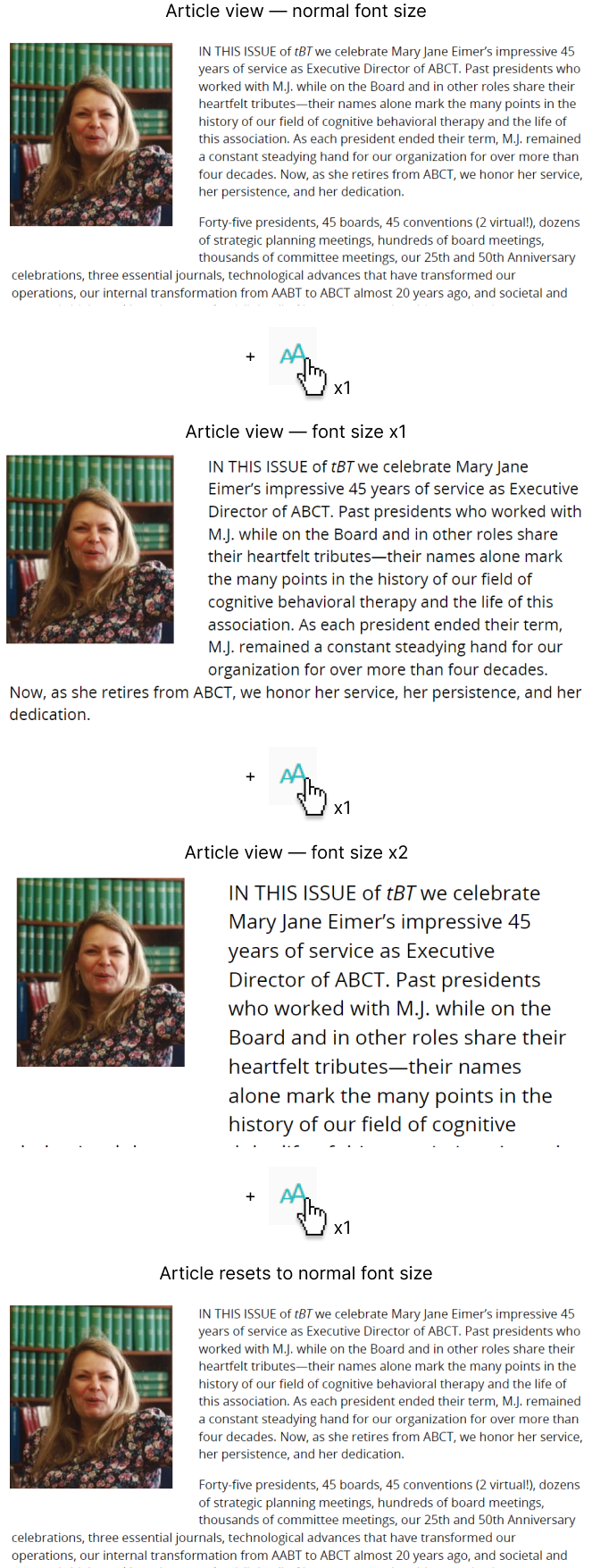

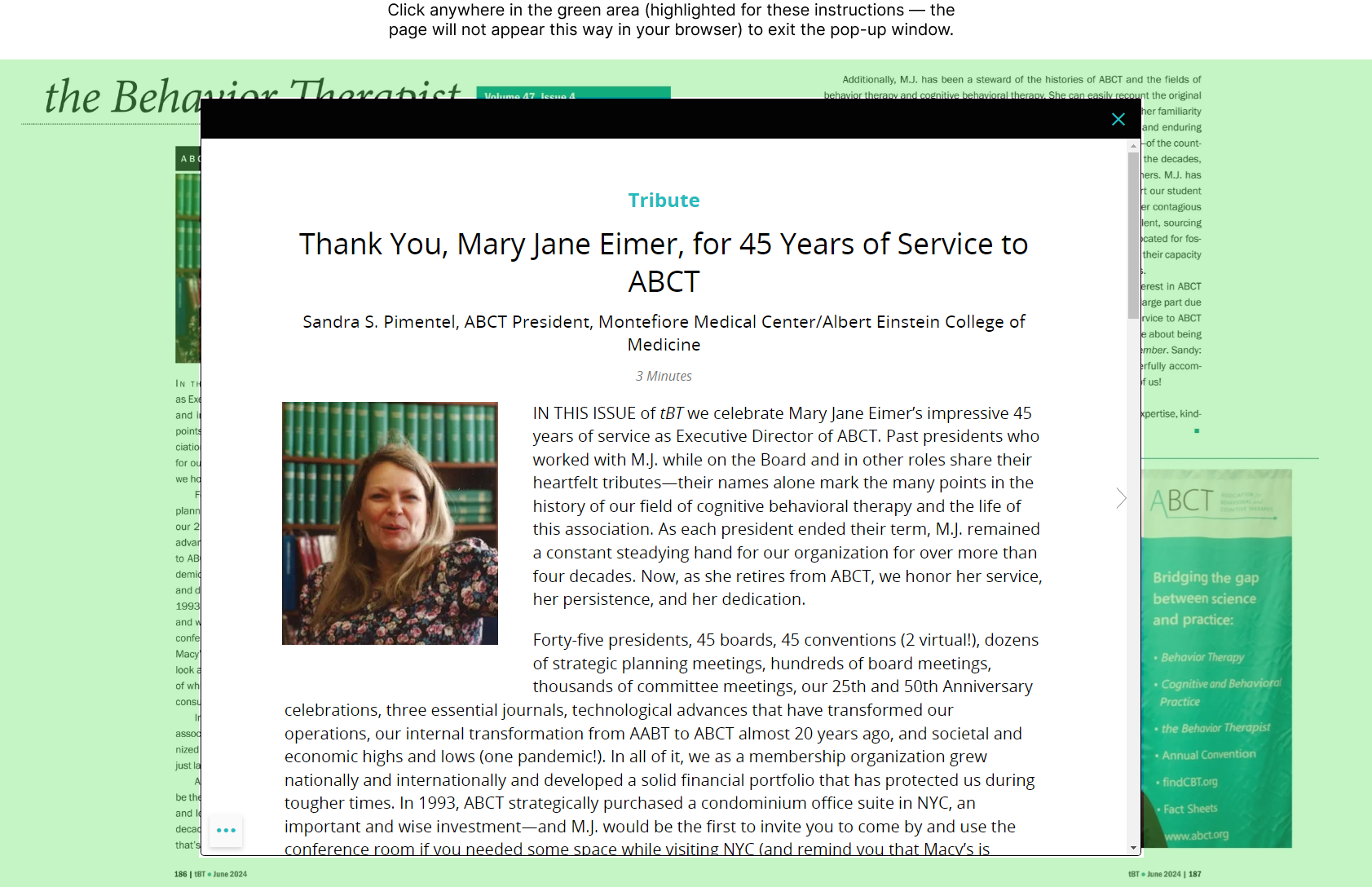

For more tips, see our March post for tBT.

